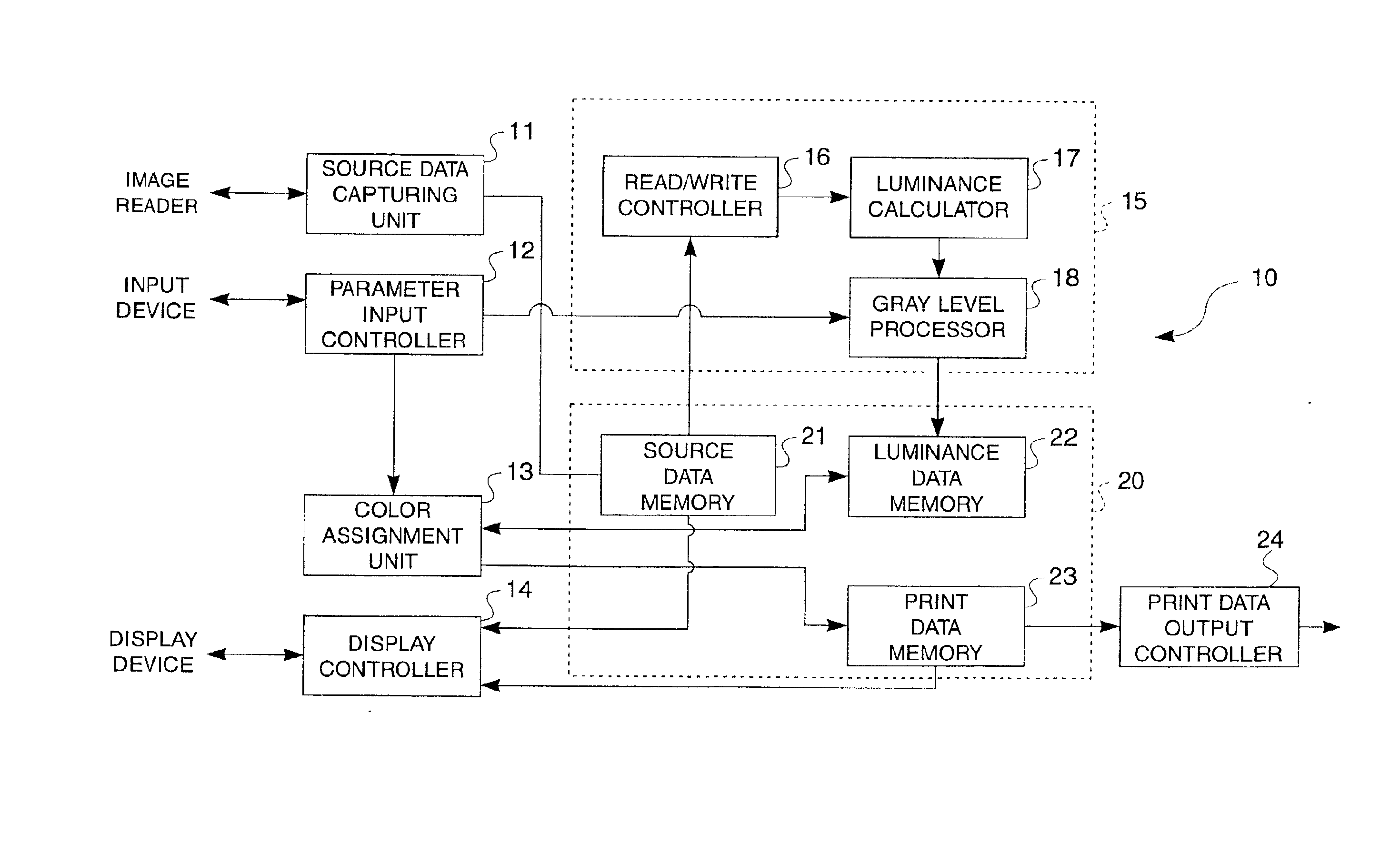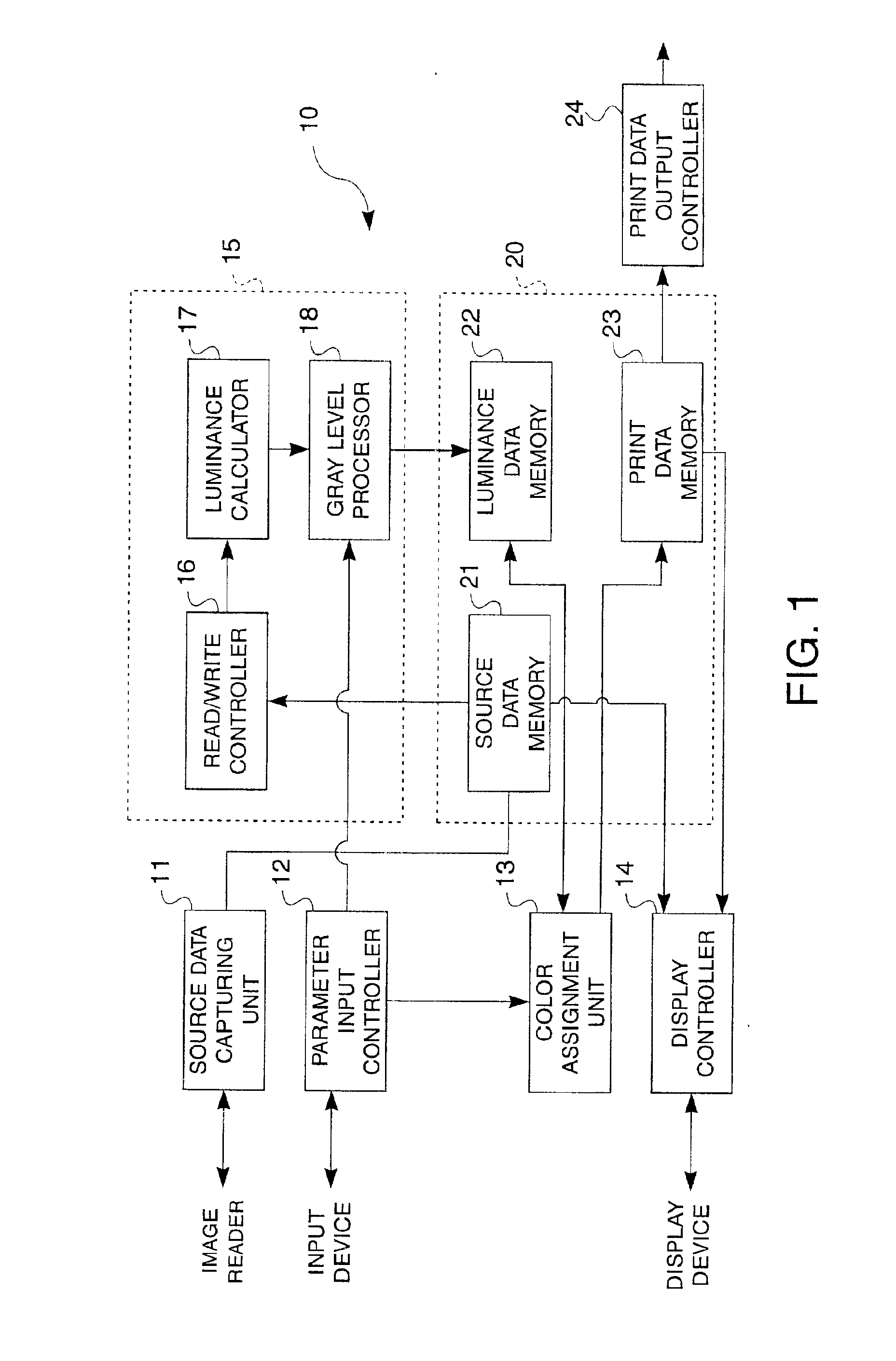System, method and computer program converting pixels to luminance levels and assigning colors associated with luminance levels in printer or display output devices
a technology of luminance level and output device, applied in static indicating device, visual presentation using printer, instruments, etc., can solve the problems of fine noise pattern, more colors printed, and longer time and operating cos
- Summary
- Abstract
- Description
- Claims
- Application Information
AI Technical Summary
Benefits of technology
Problems solved by technology
Method used
Image
Examples
Embodiment Construction
Preferred as well as alternative embodiments of the present invention are described below with reference to the accompanying figures. Additional embodiments can also be achieved by replacing one or more of the elements described below with an equivalent, as will be apparent to those skilled in the art based on the following description. All such variations and alternative embodiments within the scope of the appended claims are included in this invention.
Main Applications and Need for the Invention: Growing Use of Printing Color Images with Limited Colors
The present invention is particularly useful for processing image data to be printed on a limited-color printer used in specialized business applications. The term image data as used herein includes text data that may be printed or displayed. The invention is described below with reference to a printer used in a POS system (referred to below as a POS printer) as an example of this type of limited-color printer for such specialized bu...
PUM
 Login to View More
Login to View More Abstract
Description
Claims
Application Information
 Login to View More
Login to View More - R&D
- Intellectual Property
- Life Sciences
- Materials
- Tech Scout
- Unparalleled Data Quality
- Higher Quality Content
- 60% Fewer Hallucinations
Browse by: Latest US Patents, China's latest patents, Technical Efficacy Thesaurus, Application Domain, Technology Topic, Popular Technical Reports.
© 2025 PatSnap. All rights reserved.Legal|Privacy policy|Modern Slavery Act Transparency Statement|Sitemap|About US| Contact US: help@patsnap.com



